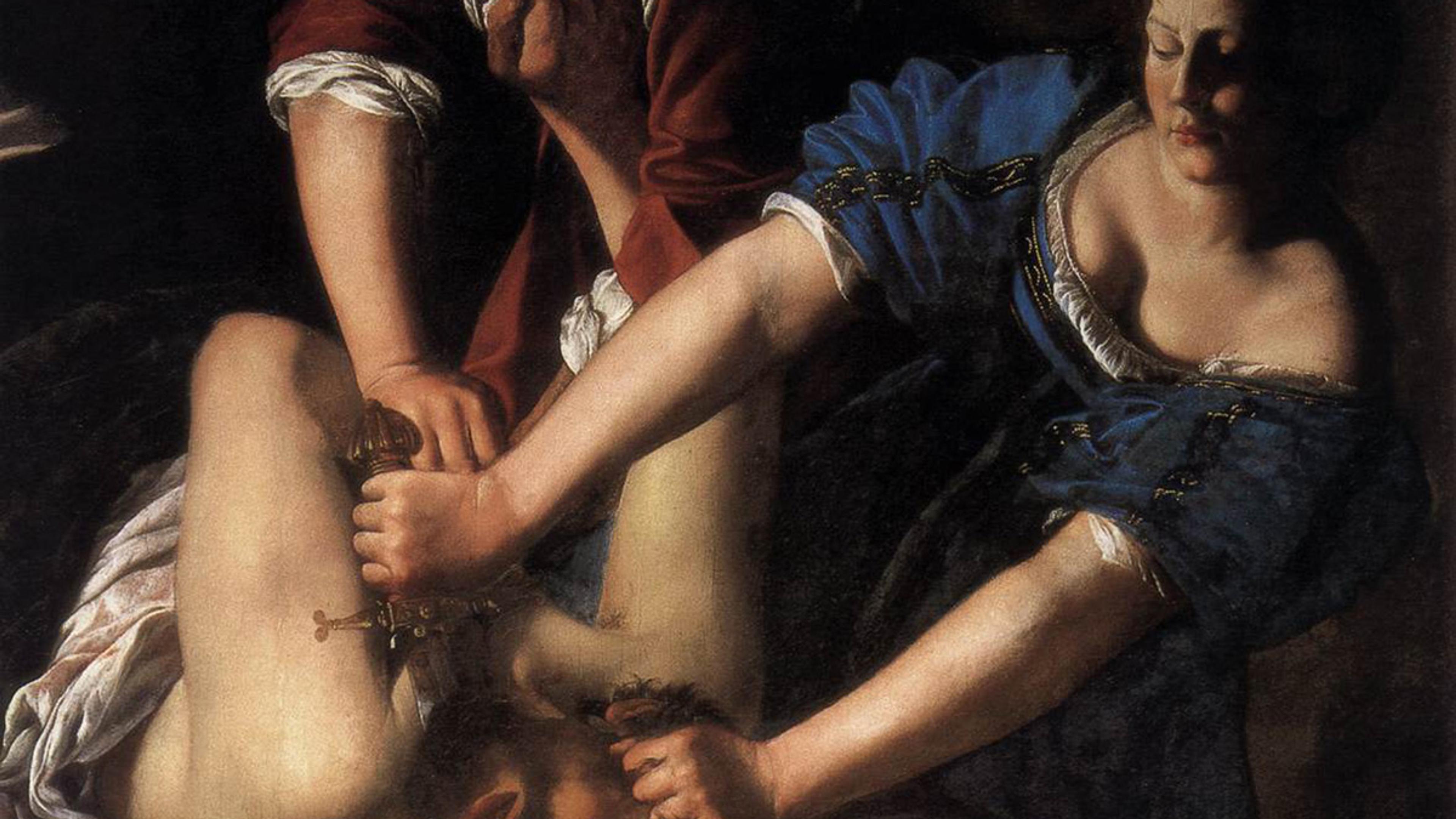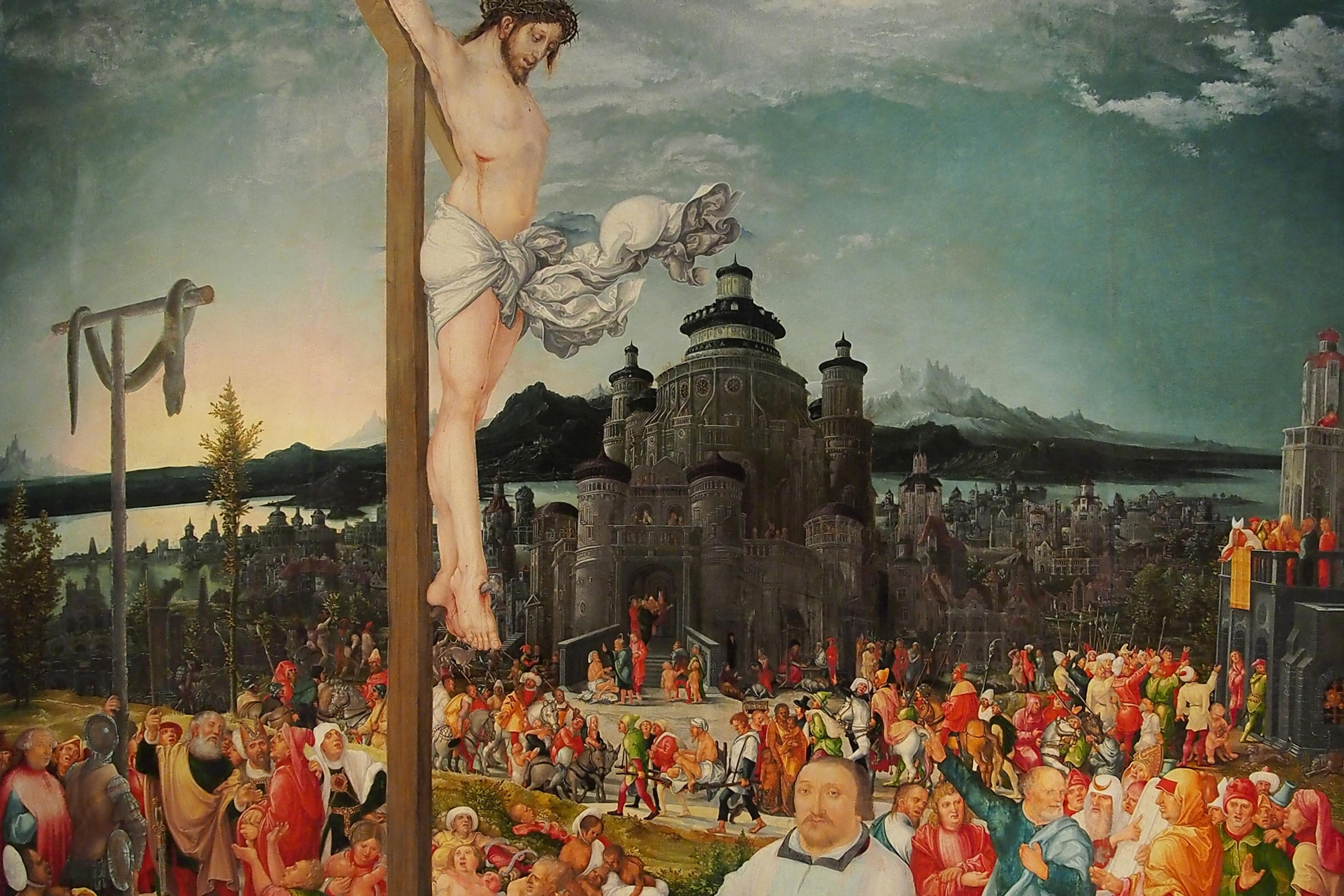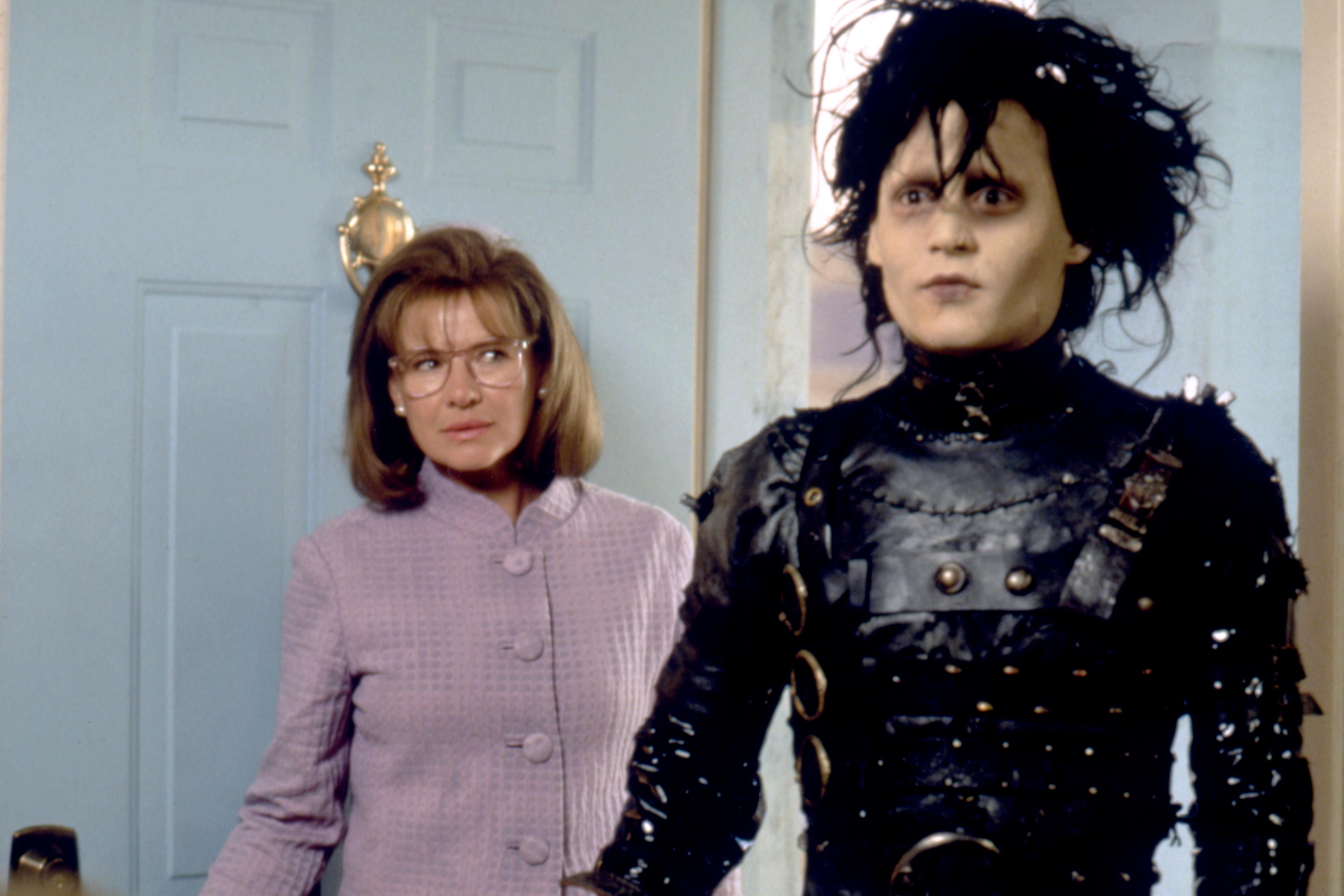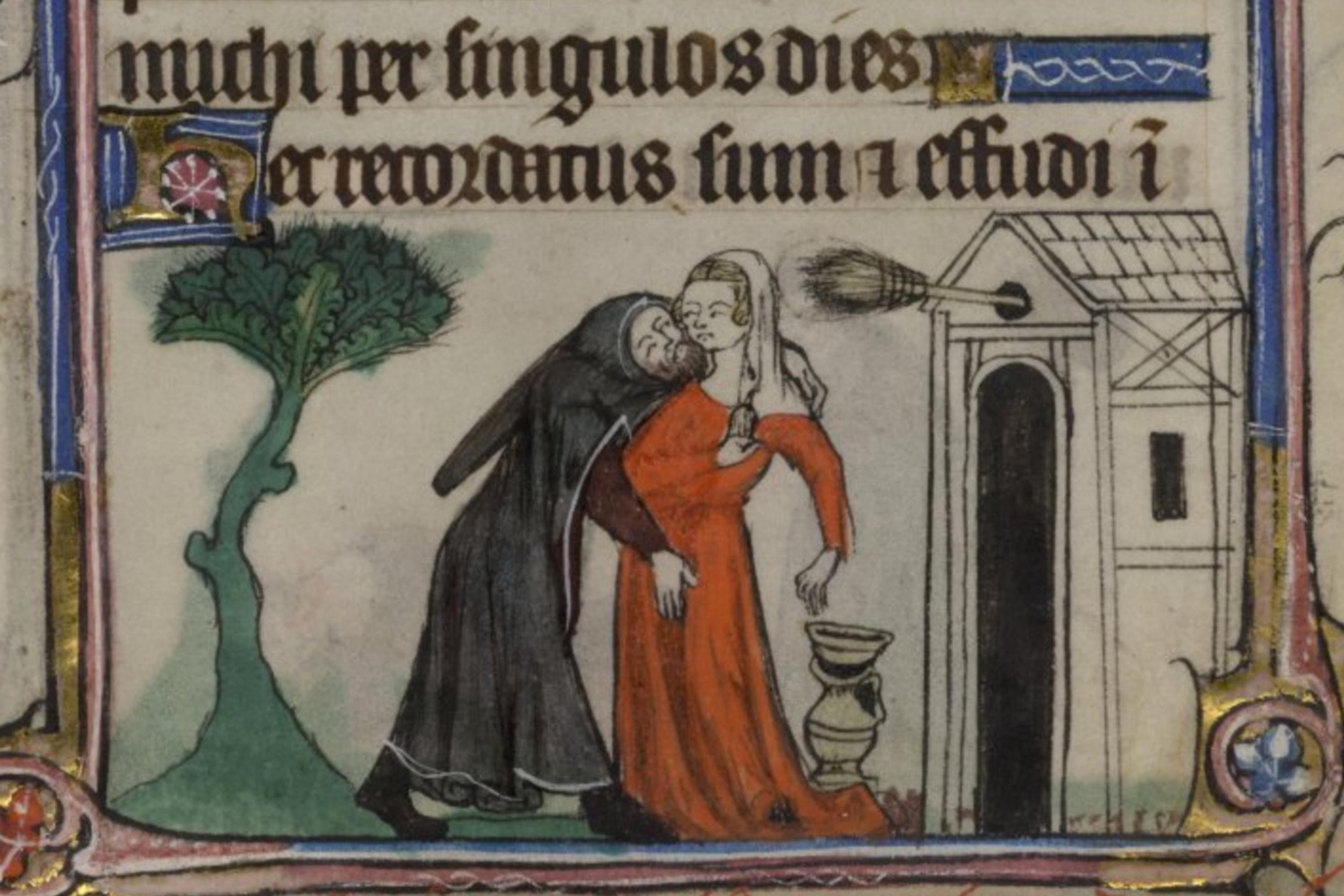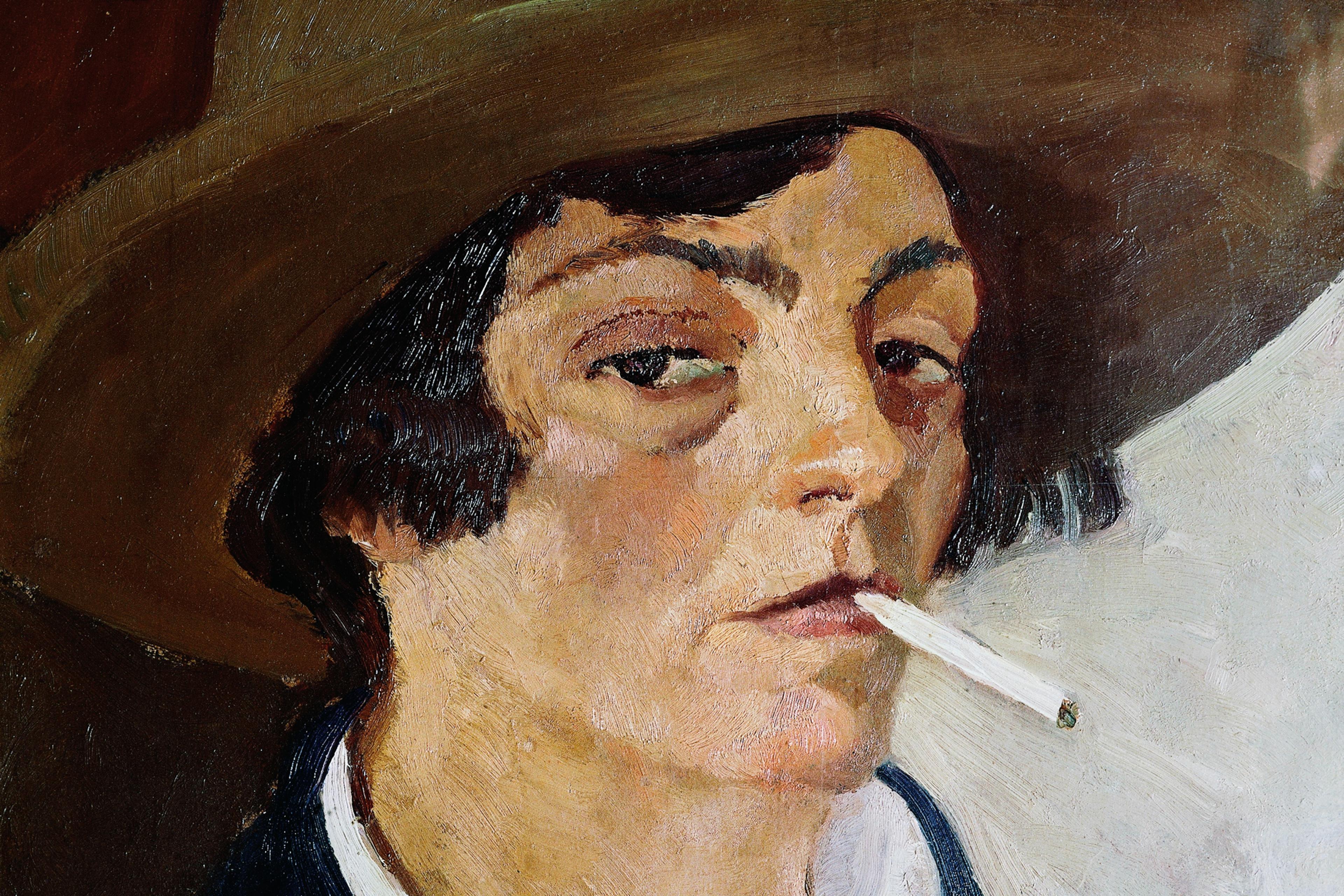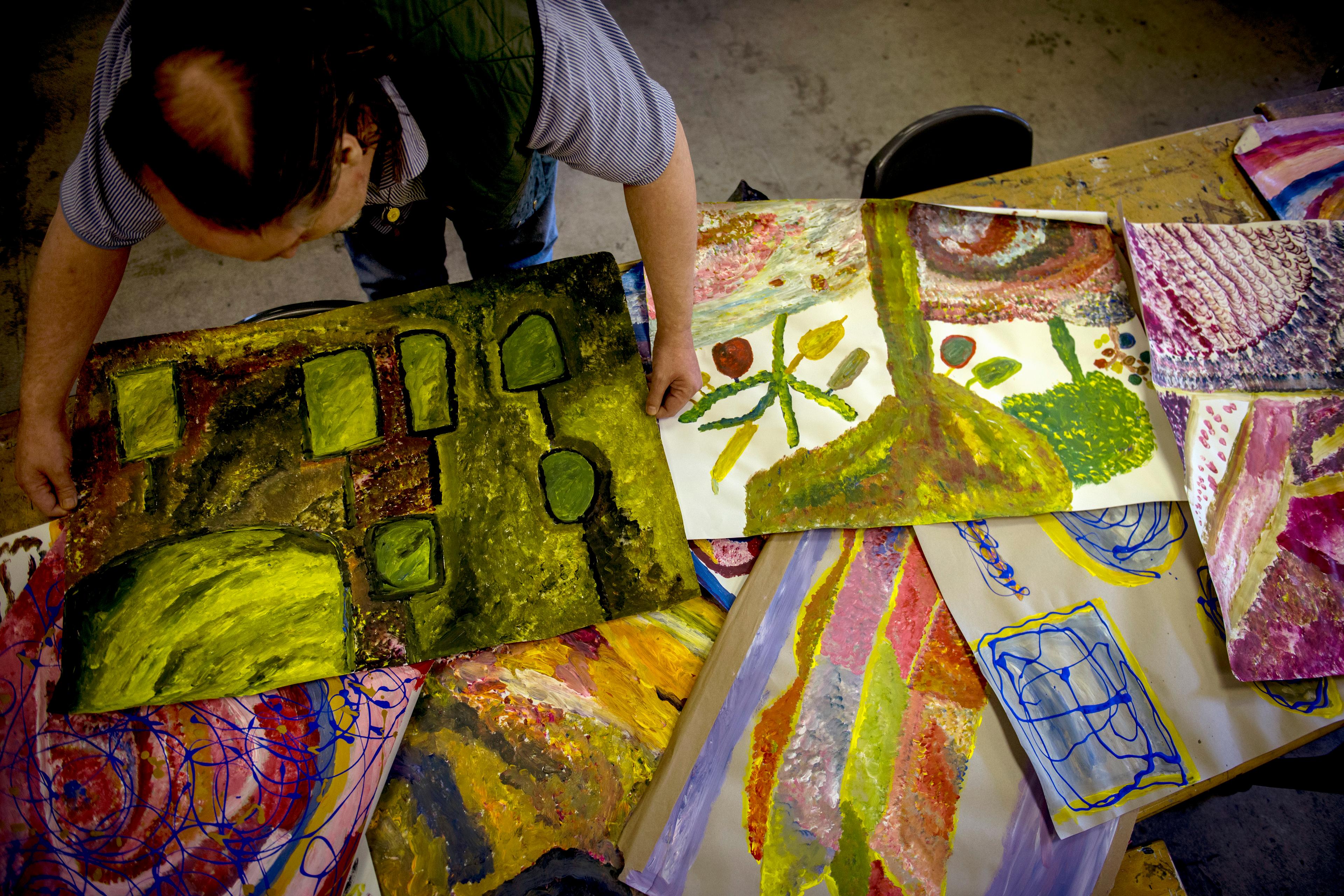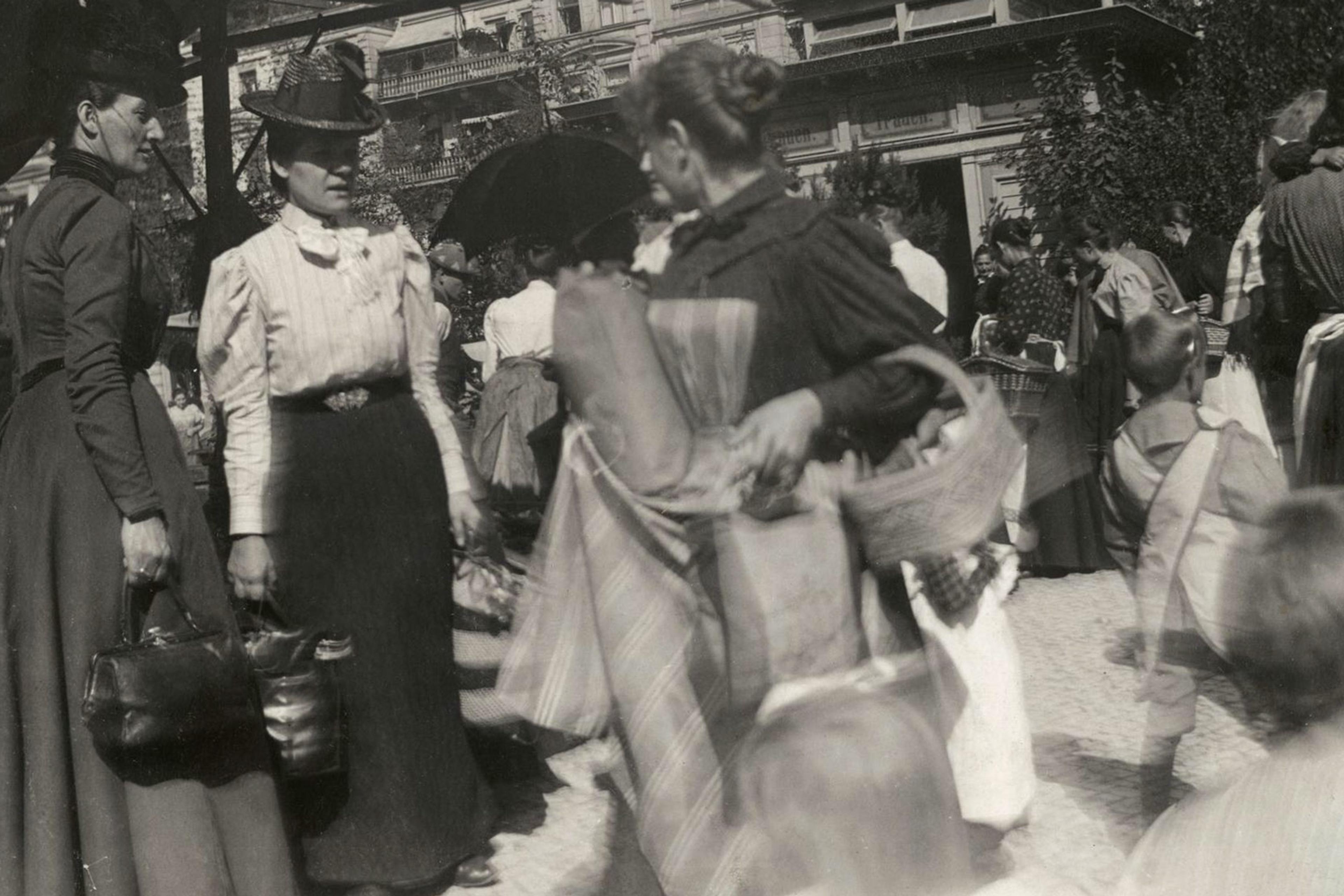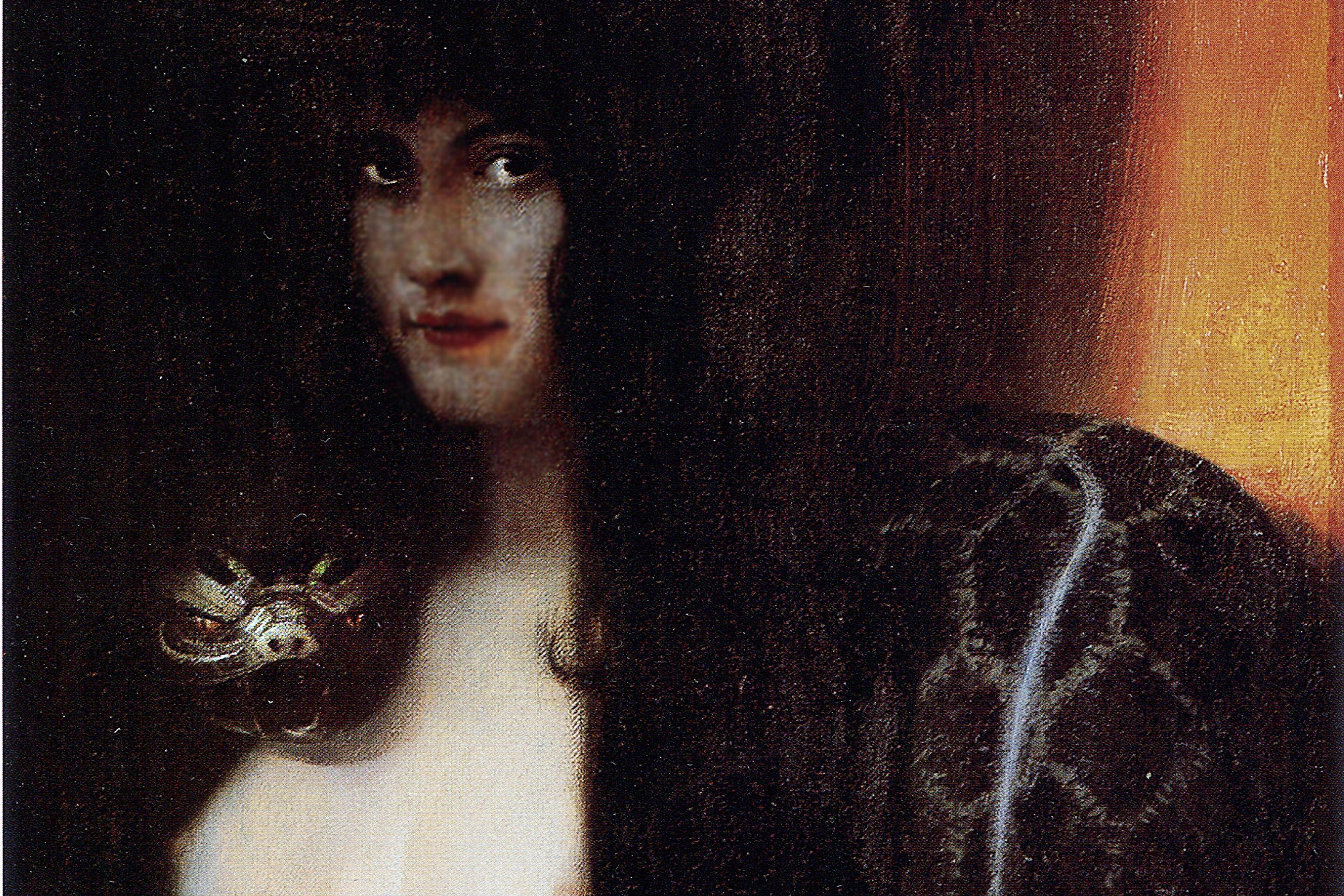Artemisia Gentileschi signed her first known painting in 1610, when she was 17. It shows the biblical protagonist Susanna, naked, flushed and writhing in discomfort as two men intrude on her bathing. The work proclaimed much of the expert modelling, colouration and narrative urgency that would secure Gentileschi’s place as one of the most famous artists of the Baroque period – ‘honoured’, as she put it to her friend Galileo Galilei, ‘by all the kings and rulers of Europe’. Like many of her subsequent paintings, Susanna and the Elders also centred its drama on female struggle.
,_Artemisia_Gentileschi.jpg?width=3840&quality=75&format=auto)
Susanna and the Elders (1610) by Artemisia Gentileschi. Courtesy Wikipedia
Gentileschi was familiar with the aggressions – everyday and egregious – that can constitute being a woman. Her mother, Prudentia Montone, died when she was 12, leaving her the nominal housekeeper to her father, the artist Orazio Gentileschi, and three younger brothers. As an aspiring painter, she could learn only in the confines of the household studio, barred from both the academy and from roaming the city without a chaperone. ‘Staying at home,’ she would recall, ‘was noxious for me.’ Her father tried repeatedly to send her to the convent, but conceded to her painterly ambitions by 1611, when he hired his colleague Agostino Tassi to tutor her in perspective. Instead, Tassi raped her.
In accordance with the moral and legal codes of the time, Tassi promised to ‘legitimise’ the assault with marriage. A sexual relationship continued for several months on this understanding, before it emerged that Tassi was in fact already married to another woman, and Orazio took the case to court. A seven-month trial ensued, during which Artemisia was shamed and slandered by Tassi’s associates, subjected to a gynaecological exam, and tortured to test the veracity of her testimony. ‘It’s true, it’s true, it’s true, it’s true,’ she answered, as the thumbscrews were clamped and tightened. Tassi was convicted, but was free within a year – likely thanks to papal protection.
After the trial, Gentileschi was swiftly married to another man and relocated to Florence. Here she embarked on some of the most astonishing canvases of her career, including Self-Portrait as Saint Catherine of Alexandria (1616-17) and Judith Beheading Holofernes (1614-20). She secured the patronage of the illustrious Court of Medici, the first in a power catalogue of clients and patrons, and became the first woman in history to enrol at the Accademia delle Arti del Disegno.
But ever since Gentileschi made it out of art-historical obscurity in the early 20th century, her work has never moved beyond Tassi’s shadow. Early reappraisals qualified her artistic abilities with references to her ‘lascivious’ and ‘precocious’ manner. The American art historian Linda Nochlin cited the case of Gentileschi in her epochal essay ‘Why Have There Been No Great Women Artists?’ (1971) to call for a ‘dispassionate, impersonal, sociological’ art history. Yet just three years later, fellow scholar Eleanor Tufts cast Gentileschi as a kind of sex-positive icon – one who, despite the trauma of her ‘introduction to the ways of love and desire’, had numerous affairs and ‘was, not surprisingly, a superb writer of love letters’.
The art historian Mary Garrard, in her 1989 biography, seemed to heed Nochlin’s call when she emphasised the technical, commercial and social scaffold of Gentileschi’s success. But this analysis was often subordinated to a marked stress on the artist’s psyche. Honing in on Gentileschi’s early rendering of Susanna and the Elders and the bloody horror of her Judith Beheading Holofernes, Garrard saw ‘vehicles of personal expression to an extraordinary degree’. By this century, the incisive edition The Artemisia Files (2005), edited by the Dutch cultural critic Mieke Bal, examined a discourse anchored in life story, which skewed the study of Gentileschi’s work with ‘scandal and sensationalist prefigurations’.
In the present moment, the confluence of commodified feminism and the #MeToo movement has produced a surge of interest in Gentileschi and in biographical interpretation of her work. With eyes on her images of violated or vengeful women, Gentileschi has become a Baroque #MeToo heroine who turned the horrors of her life into brutal painting, according to The Guardian. When one of Gentileschi’s depictions of Lucretia – a Roman noblewoman who stabbed herself in the heart after she was raped – went to auction in Paris in 2019, pre-sale publicity leaned heavily on its ‘autobiographical’ content. ‘The story of Artemisia is just like that story,’ said the auction-house specialist, ‘except that Artemisia decided on another outcome for her life.’
Conversely, when in 2018 the National Gallery in London acquired Self-Portrait of Saint Catherine of Alexandria, The Guardian criticised how the press release ‘tiptoed’ around the painter’s traumatic biography. ‘Gentileschi’s work,’ wrote Rhiannon Lucy Cosslett, ‘is bound to her experience in ways that we cannot – and should not want to – separate.’
Bound, separate. Art history has long been freighted with border disputes about the line between art and artist, between the work and the life. In Gentileschi’s case, these time-worn debates become more pronounced, not only because of the heightened human interest factor, but also because of the corporeal and compositional urgency of so many of her paintings – ‘a startling feeling’, as Siri Hustvedt writes of Judith Beheading Holofernes in 2016, ‘of a fixed, frozen, eternal now’.
Gentileschi excelled in figurative modelling. Her subjects, and most especially her women, occupy the canvas with thrilling dimensionality and expression. They move with musculature and speed. Her lavish tenebrism, elaborated from Caravaggio, makes gestures live and luminous against the shadows. The vast majority of her canvases are also composed vertically, foregoing narrative sequence to immediate, urgent action. The deep perspective that Tassi was supposed to teach her is, tellingly, rarely in evidence. Instead, Gentileschi gives us foreground frenzy: sleeves rolled up, blood spewing, a breast bared, a sword raised, a snake poised to bite. It’s all so real, so urgent, and it makes interpretative proximity to Gentileschi’s own body almost irresistible.
What’s more, the biographical interpretation grants Gentileschi – and her viewers – a kind of symbolic justice. With sword-wielding Judith at the fore, her gallery of female suffering, resistance and rage becomes, in Garrard’s words, a ‘pictorial equivalent for the punishment of Agostino Tassi’. (The Blasey Ford v Kavanaugh hearings in 2018 saw memes of Judith Slaying Holofernes circulating, captioned ‘mood’ and ‘cathartic’.)
Several of her paintings have been misattributed because they didn’t correspond to the same tropes
The urge to have Gentileschi offer up her experience in paint is compounded by contemporary exhortations to perform our identities online. ‘Sharing’ becomes the prerequisite for selfhood, and ‘speaking out’ the best way of subverting the patriarchy. As Bethany Saltman, a former sexual-violence activist and Womyn of Antioch member, remarks, we are ‘so saturated with personal tales, so oriented toward individuals and their agonies and ecstasies’. Even a seicento artist is expected to tell her story.
But the elevation of personal narrative can both silence and shore up structural violence. To understand Gentileschi’s art as biographical expression is also to risk violating her again. It subjects Gentileschi ad nauseam to an objectifying and diminishing gaze that constricts, rather than expands, our appreciation of her talent.
Indexing Gentileschi’s oeuvre back to the rape and trial reinscribes the painter as an adolescent sex object, rather than an eminent adult artist with a 40-year career across major European cities. It also means that several of her paintings have been misattributed or overlooked because they didn’t correspond to the tropes of stricken or vengeful women. For decades, Gentileschi’s David and Goliath had been attributed to Orazio Gentileschi’s male student, Giovanni Francesco Guerrieri – a misstep that was corrected only this year, when a restorer found Gentileschi’s signature on David’s sword.
In its most troubling iterations, the art/life equation bestows Tassi with a kind of foundational role in Gentileschi’s success. ‘At one time,’ wrote the feminist Germaine Greer, ‘she wished to be the wife of a painter, but she was saved from this fate against her own will.’ To neglect Gentileschi’s biography, remarked Cosslett, is to blank out a living, breathing person, ‘a person who was raped and then tortured, and created wonderful art as a result of that experience’ (my italics). The artist’s diligent years of study, her savvy networking among patrons, her robust negotiation of fees, the evolution of her style – all are relegated to peripheral details, rather than the essential labour and architecture of her achievements.
Gentileschi’s biography is frequently ‘forced upon’ both her work and its viewers
In ‘The Art Historical Canon: Sins of Omission’ (1998), Nanette Salomon probed the use of biography in the canonisation of male and female artists. Charting back to Vasari, Salomon showed how biography is deployed to individualise and mythify the male artist. For the woman artist, though, the same move is used to stress the idea that she is an errant exception, and to reduce her art ‘to a visual record of her personal and psychological make up’. For the man, in other words, biography constructs the atemporal genius. For the woman, biography underscores time-bound biology.
For Gentileschi, yet another double standard enters the picture: the readiness to separate life and art for an aggressor, against the eagerness to conflate life and art for a victim. Eric Gill; Roman Polanski; Pablo ‘each time I leave a woman, I should burn her’ Picasso. So much transcendence granted to the man-made artwork, lifted high above the abuse, however flagrant. When in 2017 Ditchling Museum of Art + Craft in East Sussex mounted an exhibition addressing Gill’s sexual abuse of his teenage daughters, the critic Rachel Cooke in The Observer wondered why this information was forced on visitors. By contrast, Gentileschi’s biography is frequently ‘forced upon’ both her work and its viewers – a process that allows sadistic relish to masquerade as gender-progressive concern, and objectifies the artist rather than recognising her immense ability.
Finally, but no less perniciously, the biographical bent has made Gentileschi fair game for fiction. Novels, plays, operas and films have all taken poetic licence with her legacy, warping facts and co-opting her work for the purposes of sensationalist storytelling. Perhaps most notorious is Agnès Merlet’s movie Artemisia (1997), which was distributed by Miramax under Harvey Weinstein, and promoted its romanticised plot between Tassi and Gentileschi as a ‘true story’. The claim was later removed after Garrard and the feminist Gloria Steinem circulated a fact-sheet, but posters continued to describe the film’s heroine as ‘Sexy. Defiant. Provocative.’ Merlet, tellingly, argued that her intention was only a ‘fleshing out’ of Artemisia’s character.
To call for a different kind of discourse around Gentileschi is neither to diminish her trauma, nor to espouse a cold formalism that suggests that art exists beyond the body of either artist or viewer. It is, instead, to liberate her oeuvre from Tassi’s grip and to grant Gentileschi the full reach and space of her creativity. It is to celebrate and study her extraordinary depictions of violated and violent women, but also to recognise her many paintings that lie beyond those tropes: her portraiture and self-portraiture, her allegories and saints, her Madonna and Child and Mary Magdalenes. ‘The works,’ as Gentileschi wrote to a patron in 1649, ‘shall speak for themselves.’
